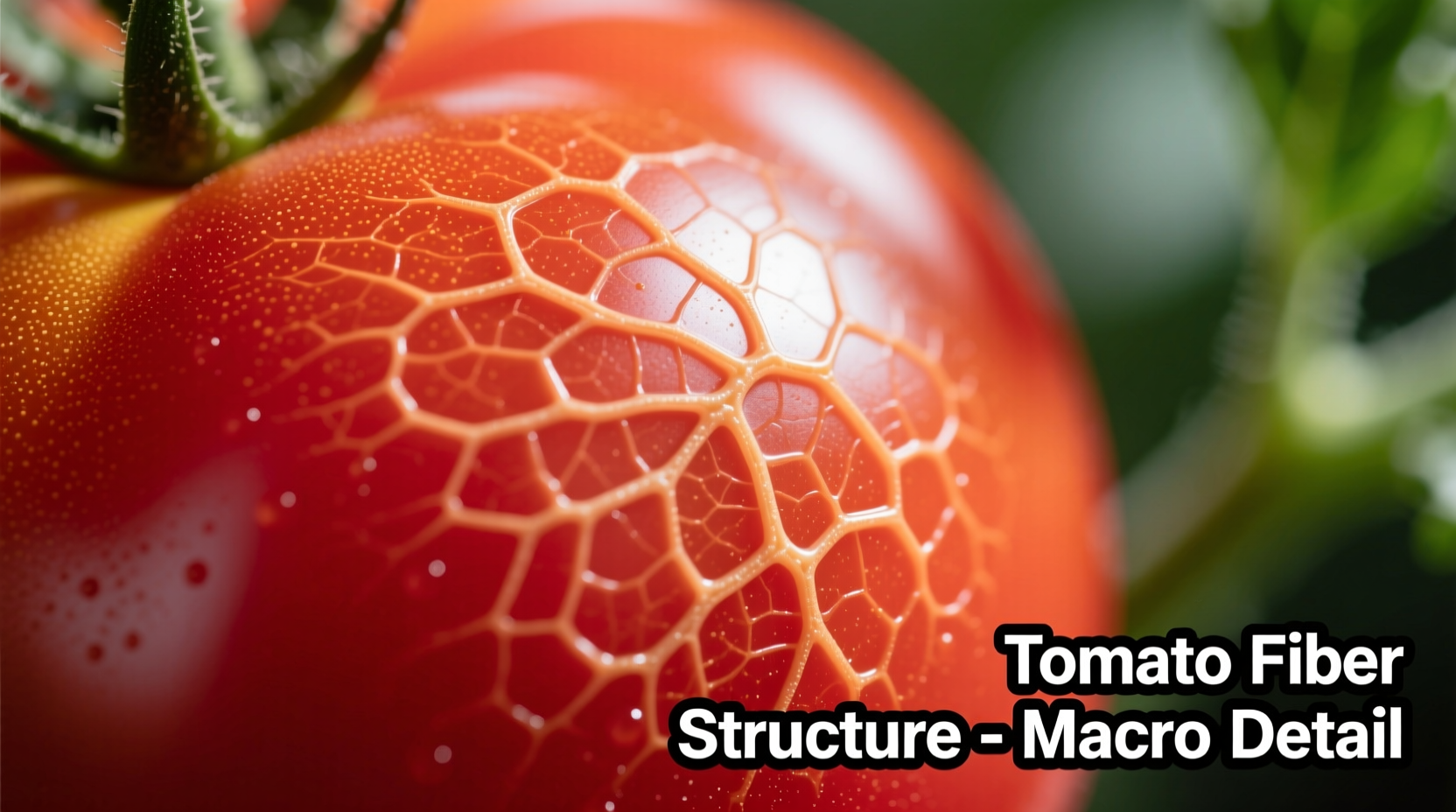Understanding the fiber content in tomatoes helps you make informed dietary choices that support your overall health. Whether you're managing digestive issues, planning balanced meals, or simply curious about this common fruit's nutritional profile, knowing exactly how tomatoes contribute to your daily fiber needs can transform how you incorporate them into your diet.
Tomato Fiber: What the Numbers Really Mean
When evaluating fiber content in tomatoes, precise measurements matter. According to the USDA FoodData Central database, the fiber content varies slightly depending on tomato variety and preparation method. The skin contains the highest concentration of insoluble fiber, while the gel surrounding the seeds provides soluble fiber that helps regulate digestion.
| Tomato Type | Weight (g) | Total Fiber (g) | Soluble Fiber (g) | Insoluble Fiber (g) |
|---|---|---|---|---|
| Medium Raw Tomato | 123 | 1.5 | 0.6 | 0.9 |
| Cherry Tomatoes (10) | 149 | 2.2 | 0.9 | 1.3 |
| Roma Tomato | 62 | 1.0 | 0.4 | 0.6 |
| Cooked Tomatoes (1 cup) | 180 | 2.0 | 0.8 | 1.2 |
This comparison reveals that cherry tomatoes actually provide slightly more fiber per gram than standard varieties. The cooking process concentrates fiber content by reducing water volume, making cooked tomato products like sauces valuable fiber sources. However, removing skins during preparation significantly reduces total fiber yield.

Why Tomato Fiber Benefits Your Body Differently
Tomato fiber works uniquely in your digestive system compared to other fruits and vegetables. The combination of soluble and insoluble fiber creates what nutritionists call a "dual-action effect"—soluble fiber forms a gel that slows digestion and stabilizes blood sugar, while insoluble fiber adds bulk that promotes regular bowel movements.
Research published in the Journal of Nutrition demonstrates that the specific fiber composition in tomatoes enhances the absorption of lycopene, their signature antioxidant. This synergy means you're not just getting fiber benefits but also maximizing the uptake of other valuable nutrients. Unlike fiber from grains, tomato fiber doesn't cause bloating in most people, making it an excellent choice for those with sensitive digestive systems.
Maximizing Fiber Intake from Tomatoes: Practical Strategies
To get the most fiber from your tomatoes, follow these evidence-based approaches:
- Never peel tomatoes - The skin contains nearly 50% of the total fiber
- Eat tomatoes with healthy fats - Olive oil enhances absorption of fat-soluble nutrients alongside fiber
- Choose vine-ripened varieties - They contain higher fiber concentrations than greenhouse-grown counterparts
- Combine with other high-fiber foods - Pair tomatoes with beans or whole grains for complementary fiber effects
A simple Mediterranean salad with unpeeled tomatoes, cucumbers, and chickpeas delivers over 8 grams of fiber per serving—more than triple what you'd get from tomatoes alone. When making tomato sauce, skip straining to retain all the fiber-rich pulp and skin.
Understanding Tomato Fiber's Role in Your Daily Nutrition
The context in which you consume tomato fiber significantly impacts its benefits. For individuals managing type 2 diabetes, the soluble fiber in tomatoes helps moderate post-meal blood sugar spikes. However, those with irritable bowel syndrome (IBS) may need to monitor their intake, as the seeds' gel can trigger symptoms in sensitive individuals.
Dietary guidelines recommend 25-38 grams of fiber daily depending on age and gender. While tomatoes alone won't meet your entire requirement, they serve as an important contributor to your overall fiber intake. Two medium tomatoes provide the same fiber content as a slice of whole wheat bread, but with additional vitamins and antioxidants.
It's worth noting that processed tomato products like ketchup contain minimal fiber due to added sugars and processing methods that remove pulp and skin. For maximum fiber benefits, choose fresh or minimally processed tomato forms.











 浙公网安备
33010002000092号
浙公网安备
33010002000092号 浙B2-20120091-4
浙B2-20120091-4